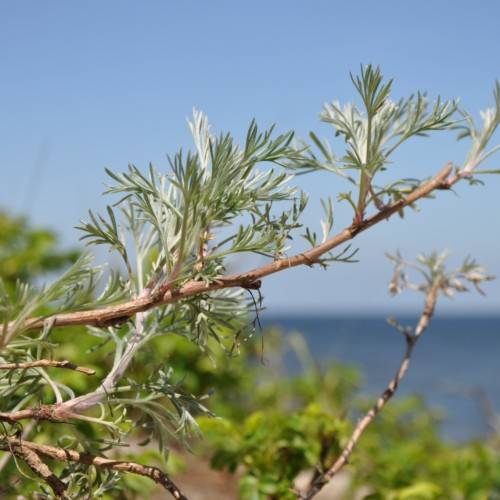
Beach Wormwood
Artemisia campestris subsp. caudata
Also Known As - Tailed WormwoodWatering:
Minimal
Hardiness Zone:
Sun:
full sun
Leaf:
Yes
Growth Rate:
Low
Poisonous To Humans:
Yes
Poisonous To Pets:
Yes
Salt Tolerant:
Yes
Invasive:
Yes
Care Level:
Medium
watering
Northern Wormwood should be watered once a week, using roughly 1 quart of water. It prefers soil with good drainage and should be watered until the soil is moderately moist. As the plant matures, water more frequently and deeply, providing enough water to keep the soil from drying out completely, but not so much that it becomes soggy. Avoid waterlogging, as this can lead to root rot. Other than that, Northern Wormwood is drought tolerant and watering too frequently can actually be damaging to the plant.
sunlight
Northern Wormwood requires about 6 to 8 hours of sunlight each day, with preferably direct sunlight during the summer months. Most northern climates will be suitable for this plant species, however it can be grown in more temperate regions with adaptations to its soil requirements and sunlight duration. In the spring, the plant may need up to 8 to 10 hours of sunlight, which should be filtered with shade cloth or other protective coverage in the afternoon. Northern Wormwood typically flowers from mid-summer onwards in July and August, which is when plenty of sunlight is necessary for its growth and flowering. In the fall and winter months, Northern Wormwood will require a reduced amount of sunlight, usually 3 to 5 hours per day. Additionally, it may need additional shading in winter to protect it from the cold temperatures.
pruning
Northern Wormwood should be pruned in spring or summer, when the plant is actively growing. It does not require much pruning; the only necessary task is to remove dead or damaged stems. This will help to encourage growth and flowering, and may even help to prevent disease. The plant can be cut back to within a few inches of the ground. If the plant is overgrown, it can be cut back to a more manageable size. It is important to prune before flowering begins, as this prevents the plant from going into seed prematurely.
